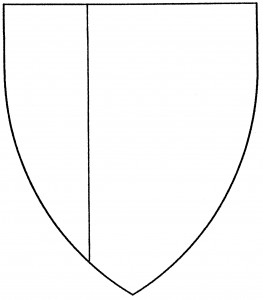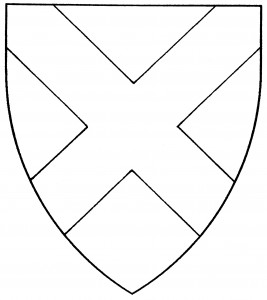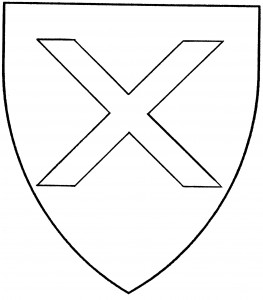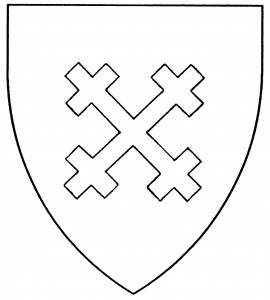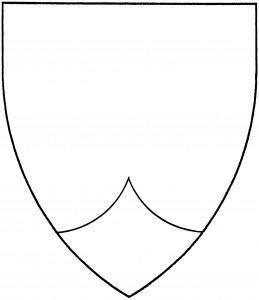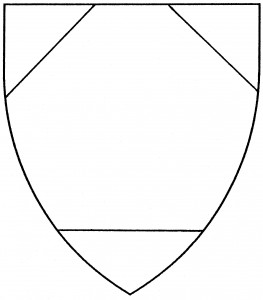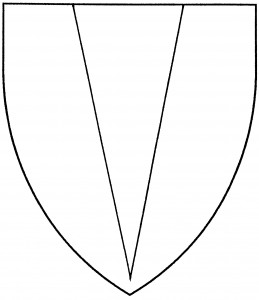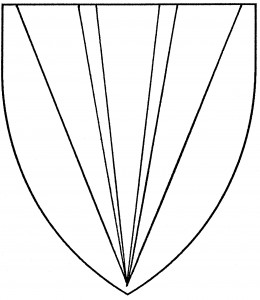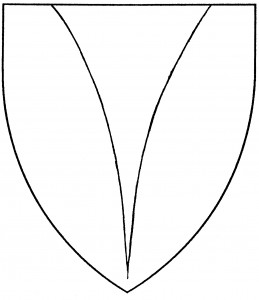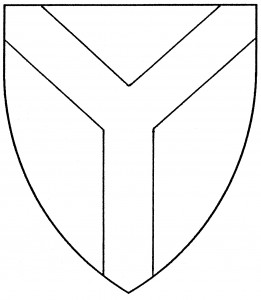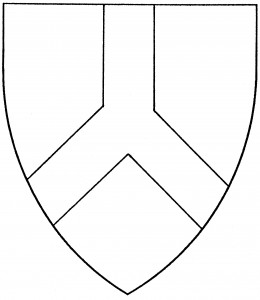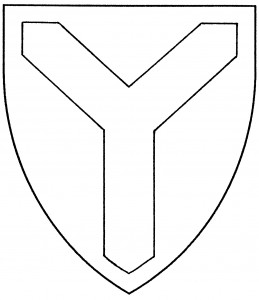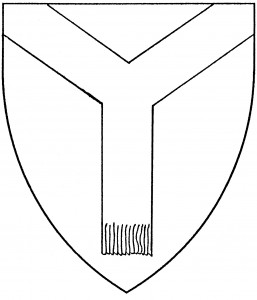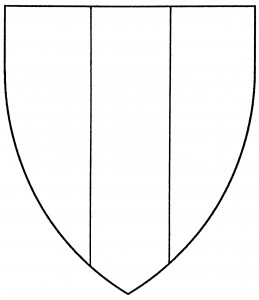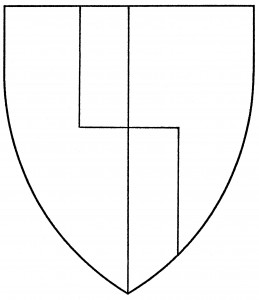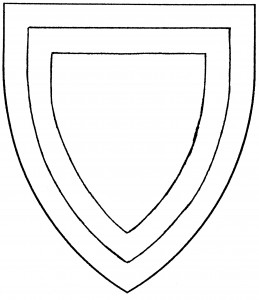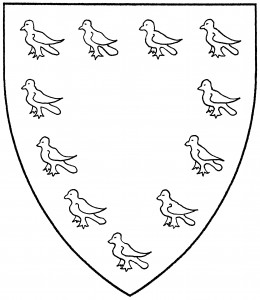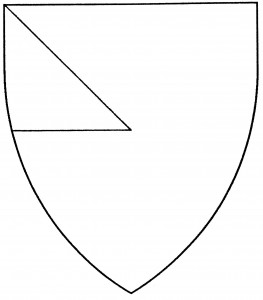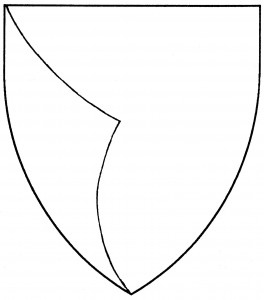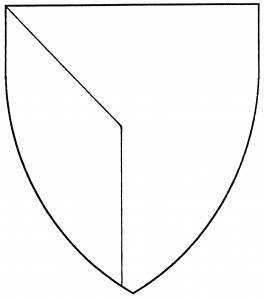Ordinaries are among the oldest and most common heraldic charges, being simple geometric shapes bounded by straight lines (or semi-circular curves, for some). Their shapes may have been derived from the reinforcing bands of a shield. There is disagreement in heraldry texts over the distinction (if any) between an ordinary and a sub-ordinary, and which charges fall into which categories. The general Society usage refers to the central ordinaries, which cross the center of the field – the bend, chevron, chief-pale, cross, fess, pale, pall, pile, and saltire – and the peripheral ordinaries, which lie on the field’s edge – the base, bordure, canton, chief, flaunches, gore, orle, and tierce.
In general, ordinaries are drawn so as to take up one-fourth to one-third the width of the shield; the bordure and the orle are typically somewhat narrower. These are rules of thumb only, not precise divisions; the exact proportions will vary, depending on the composition of the armory. If the ordinary is surrounded by secondary charges, it will be drawn somewhat narrower; if the ordinary is itself charged, or if it has a complex line of division, it will be somewhat wider.
When more than one of a given ordinary is used in armory, they must necessarily be drawn narrower; these are called the “diminutives” of that ordinary. Special terms may be used in those cases: the diminutive of the fess is the “bar”, the diminutive of the bend is the “bendlet”, &c. The diminutive term should not be applied to single ordinaries, but only when there are two or more of them (or, rarely, when the visual importance of the ordinary is in some way reduced: a “bendlet enhanced”, for instance).
More than a single type of ordinary may be used in one armory, though there are limitations. In general, the use of two or more peripheral ordinaries is considered poor style. A central ordinary may usually be used with a peripheral ordinary (a fess and a bordure, for instance). Continental armory had some special names for certain combinations of ordinaries, treating them as charges in their own right: e.g., the chief-pale, combining a pale and a chief.
Ordinaries are subject to the complex lines of division: indented, wavy, &c. Only the double-sided ordinaries, however, may be dancetty, voided, fimbriated, or cotised; and except for the fess, ordinaries nowed are considered a step from period practice. Peripheral ordinaries flory (e.g., a “bordure flory”, with demi-fleurs issuant into the field but not into the bordure) are likewise deemed a step from period practice. For more information, see the entries for the individual ordinaries. See also cotising, gemel.
Alia fitz Garanhir bears: Argent, a fess conjoined in chief with a demi-pale between three mullets of six points gules.
Daria Tayt bears: Gules, a pale and a chief Or.
